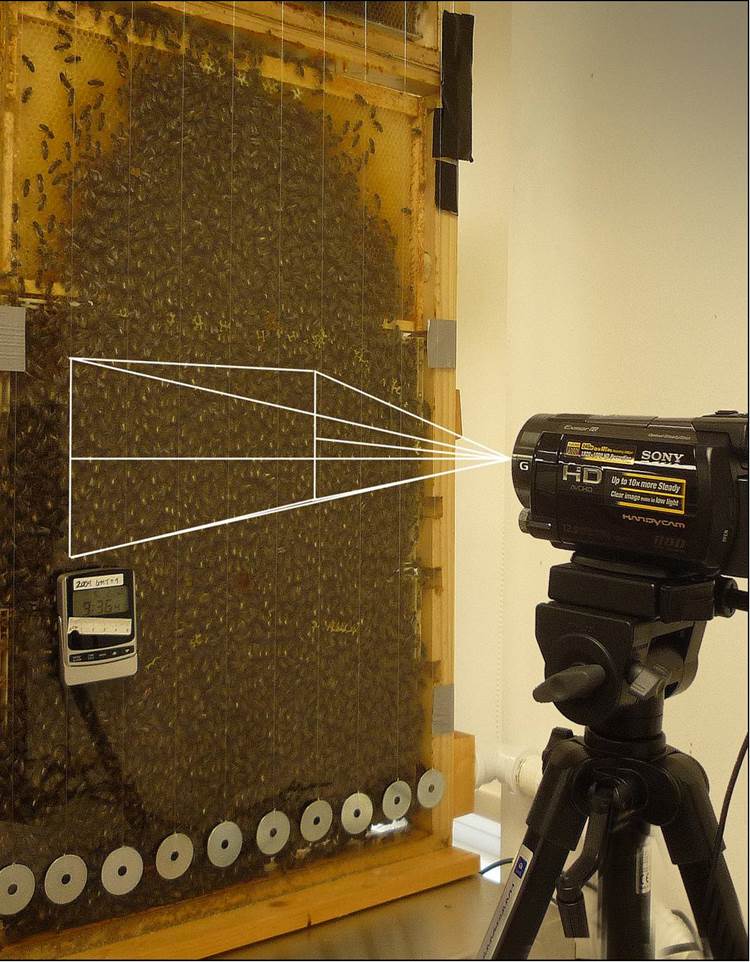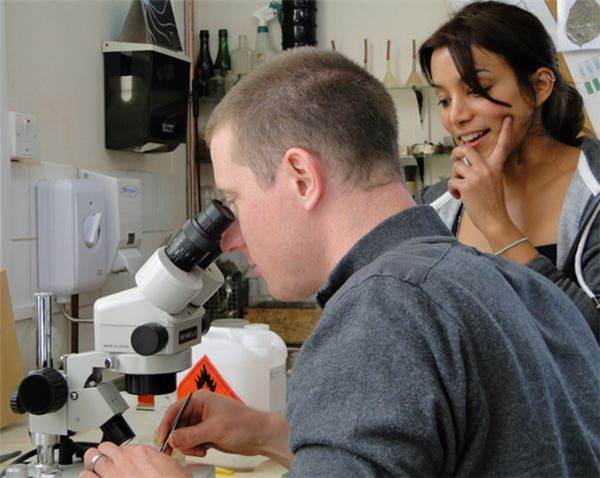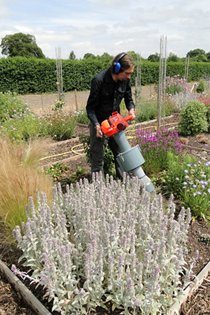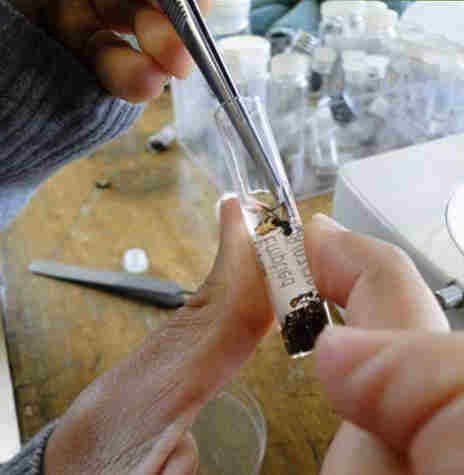- Home
- Introduction to Garden Science

Introduction to Garden Science
This section is the heart of our website, where we bring you an introduction to the environments, ecology and biodiversity of gardens - “how gardens work”. Understanding the science behind gardening will help you understand how your management affects your plants and your wildlife, and we hope will awaken your interest in what is going on out there, day and night and throughout the year.
Why is garden science important?
Science works by a process of study, devising models for explaining nature from known facts, and then testing these models to breaking point. If research shows our models for how nature works consistently fit with experimental tests and observation, we begin to increase confidence in our understanding.
We feel strongly that any management of habitats that isn’t informed by scientific evidence is at best a matter of hear-say, and at worst, can be mis-informed and counter-productive. Indeed, some of the impetus for the earlier scientific studies of wildlife gardening was the suspicion that a lot of gardening advice was based on myths repeated from book to book. This problem even affected the whole scientific view of gardens. Because nobody had bothered to look at gardens scientifically, generations of scientists assumed gardens were rotten for wildlife and even wrote this into books, creating a long-lived myth.
We know gardens are full of wildlife, and that people really appreciate this marvellous aspect of their gardening. If we want to make the best of it, and if we want gardens to help sustain wildlife under the modern threats of intensive land management and climate change, we need to base our management around sound scientific facts.
Garden ecology
Like all habitats, natural or disturbed, gardens contain many species, which have to survive within their environment, and in relation to the other species of animals and plants inhabiting the same area. Ecology is the study of how plants and animals manage these interactions, by transferring energy and material through the cycle of living organisms, through their relation to the physical environment and through predation and competition.
Look at “Garden ecology” and its linked pages to learn more of the ecological mechanisms that govern gardens, and how these could respond to climate change. There is still a great deal we don't yet understand about garden ecology, and we explain this, and ways in which you could help through established garden survey projects.
Garden biodiversity
Gardeners interfere with natural ecological processes by harvesting food, discouraging plants and creatures we don't like and by adding nutrients and other materials from outside. Nevertheless, the garden ecosystem is extremely resilient and supports an astonishing range of species, which on a species-per-unit-area is higher than any actively conserved British habitat. We have excellent evidence that an ordinary garden could hold more than 8,000 species of insects alone.
There are many reasons we can suggest for why gardens hold so much wildlife. They are very productive, often carry an almost unnatural number of plant species, and classic garden elements like hedges mimic open countryside habitats. Look at Garden biodiversity and its linked pages to find out much more about the remarkable number of species we find in our gardens, and why gardens are so diverse. This section also discusses the issues and evidence over the role of non-native garden plants, and the present and future potential of gardens for conservation.
History of gardens and wildlife
Conservationists sometimes disparage gardens as purely modern, artificial and therefore unnatural and unimportant habitats. Surprisingly, they are older than classic conservation habitats like chalk grassland and managed coppice woodland - both of them artificial too - and date back to the Neolithic period in Britain. Gardening started in the Middle East just after the ice age, when Britain was still attached to Europe. Learn more about the history of gardens, and how many familiar, naturalised (and conserved) plants today arrived through garden cultivation in the page History of gardens and wildlife.
Other ways to find out about gardens and wildlife
There are lots of sources of information about wildlife gardening, and this website is only one, although we do try here to fill in the gaps left by others. The pages under Finding out more give some guidance on reliable information sources from the simple to the deeply technical, and we hope this will be helpful.


Introduction to Garden Science
This section is the heart of our website, where we bring you an introduction to the environments, ecology and biodiversity of gardens - “how gardens work”. Understanding the science behind gardening will help you understand how your management affects your plants and your wildlife, and we hope will awaken your interest in what is going on out there, day and night and throughout the year.
Why is garden science important?
Science works by a process of study, devising models for explaining nature from known facts, and then testing these models to breaking point. If research shows our models for how nature works consistently fit with experimental tests and observation, we begin to increase confidence in our understanding.
We feel strongly that any management of habitats that isn’t informed by scientific evidence is at best a matter of hear-say, and at worst, can be mis-informed and counter-productive. Indeed, some of the impetus for the earlier scientific studies of wildlife gardening was the suspicion that a lot of gardening advice was based on myths repeated from book to book.
This problem even affected the whole scientific view of gardens. Because nobody had bothered to look at gardens scientifically, generations of scientists assumed gardens were rotten for wildlife and even wrote this into books, creating a long-lived myth.
We know gardens are full of wildlife, and that people really appreciate this marvellous aspect of their gardening. If we want to make the best of it, and if we want gardens to help sustain wildlife under the modern threats of intensive land management and climate change, we need to base our management around sound scientific facts.
Garden ecology
Like all habitats, natural or disturbed, gardens contain many species, which have to survive within their environment, and in relation to the other species of animals and plants inhabiting the same area. Ecology is the study of how plants and animals manage these interactions, by transferring energy and material through the cycle of living organisms, through their relation to the physical environment and through predation and competition.
Look at “Garden ecology” and its linked pages to learn more of the ecological mechanisms that govern gardens, and how these could respond to climate change. There is still a great deal we don't yet understand about garden ecology, and we explain this, and ways in which you could help through established garden survey projects.
Garden biodiversity
Gardeners interfere with natural ecological processes by harvesting food, discouraging plants and creatures we don't like and by adding nutrients and other materials from outside. Nevertheless, the garden ecosystem is extremely resilient and supports an astonishing range of species, which on a species-per-unit-area is higher than any actively conserved British habitat. We have excellent evidence that an ordinary garden could hold more than 8,000 species of insects alone.
There are many reasons we can suggest for why gardens hold so much wildlife. They are very productive, often carry an almost unnatural number of plant species, and classic garden elements like hedges mimic open countryside habitats. Look at Garden biodiversity and its linked pages to find out much more about the remarkable number of species we find in our gardens, and why gardens are so diverse. This section also discusses the issues and evidence over the role of non-native garden plants, and the present and future potential of gardens for conservation.
History of gardens and wildlife
Conservationists sometimes disparage gardens as purely modern, artificial and therefore unnatural and unimportant habitats. Surprisingly, they are older than classic conservation habitats like chalk grassland and managed coppice woodland - both of them artificial too - and date back to the Neolithic period in Britain. Gardening started in the Middle East just after the ice age, when Britain was still attached to Europe. Learn more about the history of gardens, and how many familiar, naturalised (and conserved) plants today arrived through garden cultivation in the page History of gardens and wildlife.
Other ways to find out about gardens and wildlife
There are lots of sources of information about wildlife gardening, and this website is only one, although we do try here to fill in the gaps left by others. The pages under Finding out more give some guidance on reliable information sources from the simple to the deeply technical, and we hope this will be helpful.


















